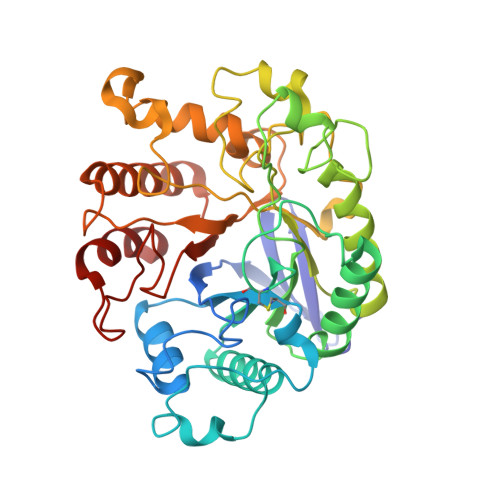The role of disulfide bond in hyperthermophilic endocellulase
Kim, H.-W., Ishikawa, K.(2013) Extremophiles 17: 593-599
- PubMed: 23624891
- DOI: https://doi.org/10.1007/s00792-013-0542-8
- Primary Citation of Related Structures:
3W6L, 3W6M - PubMed Abstract:
The hyperthermophilic endocellulase, EGPh (glycosyl hydrolase family 5) from Pyrococcus horikoshii possesses 4 cysteine residues forming 2 disulfide bonds, as identified by structural analysis. One of the disulfide bonds is located at the proximal region of the active site in EGPh, which exhibits a distinct pattern from that of the thermophilic endocellulase EGAc (glycosyl hydrolase family 5) of Acidothermus cellulolyticus despite the structural similarity between the two endocellulases. The structural similarity between EGPh and EGAc suggests that EGPh possesses a structure suitable for changing the position of the disulfide bond corresponding to that in EGAc. Introduction of this alternative disulfide bond in EGPh, while removing the original disulfide bond, did not result in a loss of enzymatic activity but the EGPh was no longer hyperthermostable. These results suggest that the contribution of disulfide bond to hyperthermostability at temperature higher than 100 °C is restrictive, and that its impact is dependent on the specific structural environment of the hyperthermophilic proteins. The data suggest that the structural position and environment of the disulfide bond has a greater effect on high-temperature thermostability of the enzyme than on the potential energy of the dihedral angle that contributes to disulfide bond cleavage.
Organizational Affiliation:
Division of Life Sciences, Korea Polar Research Institute KOPRI, Incheon 406-840, Korea.















